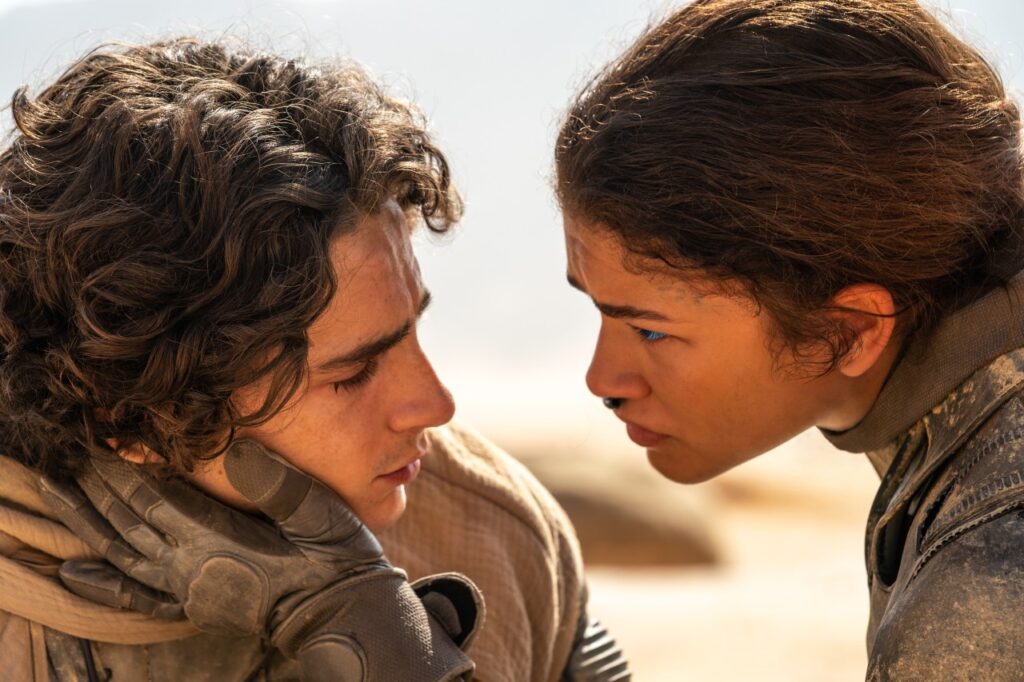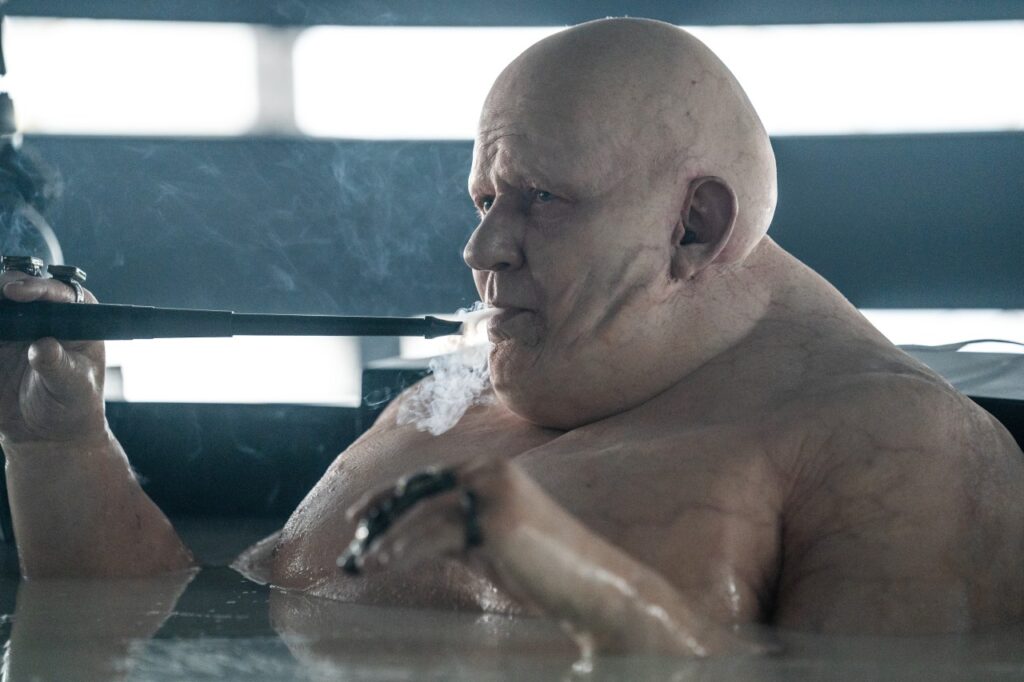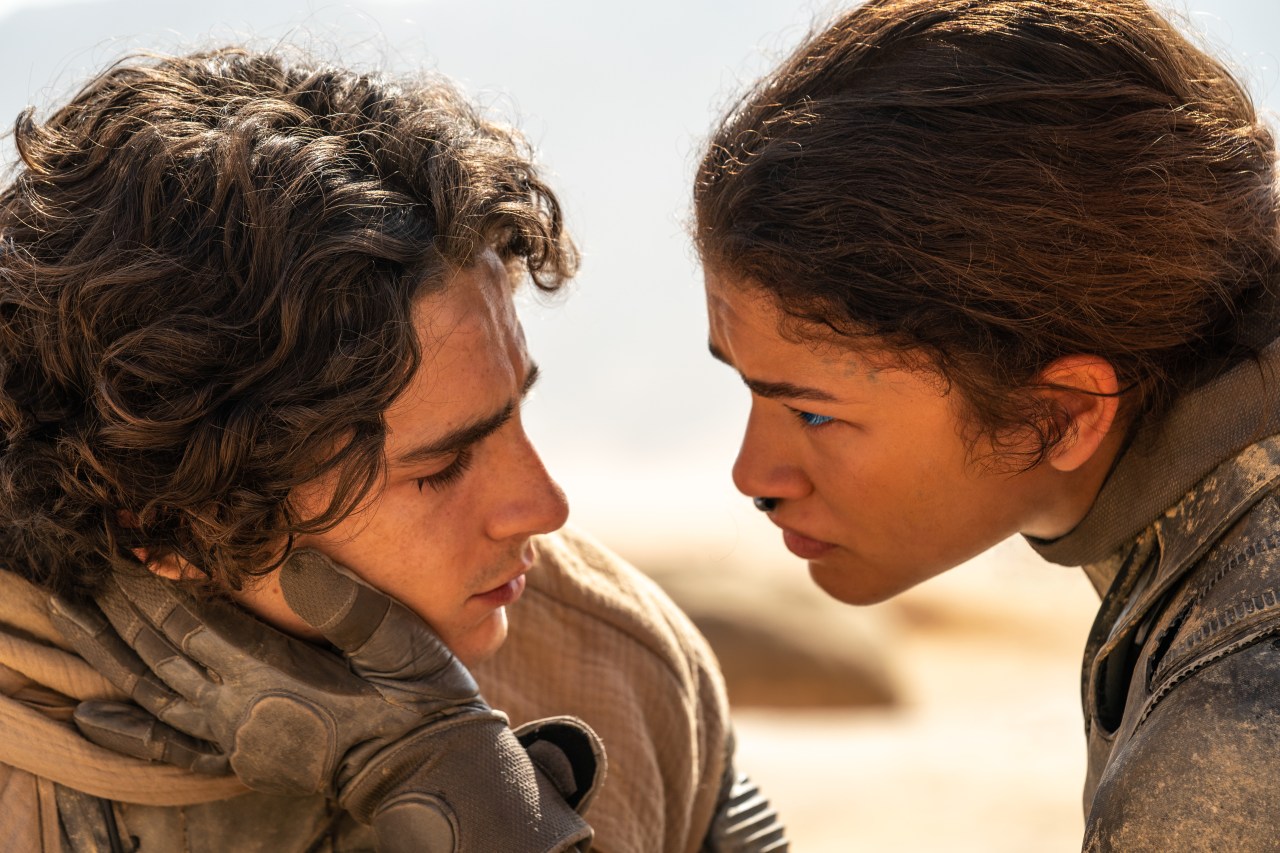It’s been a few weeks since the global theatrical release of Dune: Part Two. Director Denis Villeneuve’s second entry in the Dune franchise arrives almost two and a half years after Part One. Dune: Part Two was originally due to be released on October 20, 2023. The SAG-AFTRA strike that ran through the summer of last year forced distributor Warner Bros Discovery to delay its release to March 1, 2024. This delay means Dune: Part Two has become an early contender for the 2025 Awards season. Having now seen the movie, here are my thoughts on Dune: Part Two.
Dune: Part Two picks up shortly after the conclusion of 2021’s Dune: Part One. After the assault on their homeworld by the competing Harkonnen family, Paul Atreides (Timothée Chalamet) and his mother Lady Jessica (Rebecca Ferguson) fled into the deserts of Arrakis. The surviving Atreides clan members exile sees them join the semi-nomadic Fremen tribe. The Fremen’s leader Stilgar (Javier Bardem) believes Paul is a prophet – Lisan al-Galib – a figure within the Fremen religion. Paul and Lady Jessica initially meet hostility from the more skeptical Fremen members, including the warrior Chani (Zendaya). They are however eventually able to win around these skeptics when Lady Jessica takes part in a Fremen ritual. This ritual involves drinking the Water of Life – a blue liquid harvested from sandworms – used to determine the new Reverend Mother.
Paul meanwhile tries to assimilate into the Fremen community. He learns to ride a sandworm, and also becomes a Fredaykn fighter. This allows Paul to gain revenge on the Harkonnen’s for them murdering his father. The Fremen launch a guerrilla warfare campaign against the Harkonnens. He also falls in love with Fremen warrior Chani (Zendaya).

Following their massacre of the Atreides’ forces on Arrakis, the Harkonnens attempt to secure control of spice production on the planet. Harkonnen patriarch Baron Vladamir (Stellan Skarsgård) appoints his nephew Glossu Rabban Harkonnen to undertake this task. Rabban’s attempts to ensure the security of spice production on Arrakis are repeatedly thwarted by Fremen attacks on the Harkonnen’s spice production infrastructure. The Baron grows increasingly frustrated at these Fremen raids. This leads to him replacing Rabban with his younger, psychotic brother Feyd-Rautha Harkonnen (Austin Butler).
While the bulk of Dune: Part Two takes place on Arrakis, the film also spends a considerable amount offworld. The first of these new planets is Kaitan. Kaitan is the homeworld of Emperor Shaddam IV (played by a surprisingly restrained Christopher Walken) and his daughter Princess Irulan Corrino (Florence Pugh). We also return to the Harkonnen’s home planet of Giedi Prime. It is here that viewers learn the Bene Gesserit – an all-female religious cult – manipulated the Emperor into ordering the murder of House Atredies. This is also where we meet Lady Margot Fenring (Lea Seydoux). The Bene Gesserit send Lady Fenring to Geidi Prime to monitor Feyd-Rautha Harkonnen as a viable alternative to Paul in instigating a holy war.
These several plot threads come together brilliantly in the final act of Dune: Part Two. The final hour of Dune sees Feyd-Rautha arrive on Arrakis, and the war between the Fremen and Harkonnen forces escalates. This culminates in a bloody and final showdown between Paul Atreides and Feyd-Rautha Harkonnen.

Watching Dune: Part Two, I was immediately in awe of its incredible production values. Despite having a reported budget of $190 million USD, Dune: Part Two makes extensive use of practical effects. Director Denis Villeneuve chose to film scenes on location in Dubai (which doubles for the planet Arrakis). This is somewhat of an anomaly amongst big blockbusters from the major Hollywood studios, who now increasingly rely on CGI and green screens to replace physical sets and on-location filming.
The use of traditional film-making techniques over modern technological solutions isn’t a guarantee of a good movie. However, I found these techniques helped make Dune: Part Two feel more immersive as a cinematic experience. This was particularly the case during the film’s climatic battle scenes. The confrontation between the Fremen resistance and the Harkonnen forces feels incredibly visceral and epic. It’s possibly the closest a director has come to capturing the magic of Peter Jackson’s Lord of the Rings trilogy in terms of drama and scale. These scenes also feel infinitely more exciting than the sterile battle scenes we’ve come to expect from recent MCU movies.
The other thing that immediately struck me watching Dune: Part Two was how topical it felt. The Machiavellian plotting of the Bene Gesserit religious leaders in Dune: Part Two is eerily reminiscent of the political manoeuvring Christian nationalists have undertaken recently in the United States. The blind devotion the Fremen show towards Paul feels analogous to the fanaticism we see from some Donald Trump supporters. There are also parallels between the themes and events of Dune: Part Two, and the ongoing crisis in the Middle-East.
While there’s a lot to enjoy about Dune: Part Two, my one criticism of the film would be its ending. Rather than providing viewers with a truly satisfying conclusion, Part Two’s ending sets up a third Dune film. Director Denis Villeneuve has publicly stated he wants to adapt the second book in the Dune series – Dune: Messiah – at some point in the future. Despite this knowledge, I still would have preferred for Dune: Part Two to feel like the final chapter of a two-part story.
In summary, Dune: Part Two is an incredible cinematic achievement from a director at the peak of his powers. Denis Villeneuve has created a bold cinematic spectacle that is visually stunning and deserves to be seen in cinemas. Dune: Part Two also provides cinema-going audiences with a crucial and timely reminder of the dangers of religious fanaticism. It is a nearly flawless cinematic experience, one that cements Denis Villeneuve alongside Christopher Nolan as one of the few directors in Hollywood who can make a modern blockbuster that simultaneously feels like a piece of arthouse cinema. If you haven’t seen it yet, make plans to see Dune: Part Two as soon as possible!
